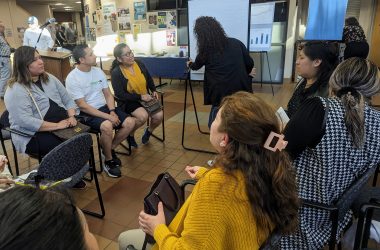
Covid isn’t going anywhere and Salem Reporter set out to find answers to the community’s most pressing questions about the virus as misinformation swirls online. We turned to various experts to find out answers to questions ranging from how many people are asymptomatic to who can get tested.
The Marion County Health Department, Oregon Health Authority and Salem Health all participated by responding to the community’s questions.
The responses are presented as they were submitted except for editing for brevity.
-Salem Reporter staff
TOPIC: ABOUT COVID
Q: What share of people who test positive are experiencing symptoms of the virus? I saw a national figure of 20 percent to 40 percent not experiencing symptoms, and wonder if any more clarity has been added to that.
A: In Oregon, as of July 22, 75.6% of cases reported having experienced some type of symptom, 11.9% of cases had unknown symptom status, and 12.5% of cases reported no symptoms. The most common reported symptom was cough.
– Jonathan Modie, spokesman, Oregon Health Authority
Q: What I’d like to know is what is the latest evidence as to how long the virus lives on surfaces? I’ve heard various things but am not sure of the most current information.
A: There’s still a lot we don’t know about how long the novel coronavirus, COVID-19, lives on surfaces. Depending on the material, it may survive for hours to days. The World Health Organization points to studies that show the COVID-19 virus “can survive for up to 72 hours on plastic and stainless steel, less than 4 hours on copper and less than 24 hours on cardboard.” When coronavirus is exposed to sunlight outdoors, some evidence suggests that it can be inactivated in minutes. It’s important to remember that the virus is most commonly spread from person to person among close contacts, or individuals within 6 feet of each other, through respiratory droplets rather than through objects and surfaces, like doorknobs, countertops, keyboards or toys. The best way to protect yourself is by avoiding touching your eyes, mouth, or nose after coming in contact with high-touch surfaces, frequently cleaning these surfaces with household cleaners and disinfectants, and washing your hands often with regular soap and water for at least 20 seconds or using hand sanitizer.
– Jonathan Modie, spokesman, Oregon Health Authority
Q: There have been stories of people getting it twice. Are they really getting infected twice or is it a testing issue? If they are infected twice does that stop the opportunity to build herd immunity?
A: It’s too early to know. Scientists and doctors haven’t had much time to study the virus, and are learning more everyday. We do not know of a case of someone getting the virus twice in Marion County, however there is little evidence to suggest that individuals can or cannot get the virus multiple times. If someone has the virus and recovers, they should continue to take the same preventive measures as everyone else by wearing a face covering, physically distancing, and staying home if they are sick.
– Katrina Rothenberger, director, Marion County Public Health
Q: Assuming that you’re positive/presumptive and quarantining, are there best practices to prevent in-home spread? Do we know yet whether home AC is a likely vector?
A: Because of the nature of the virus, air conditioning and HVAC systems are not believed to be a route of transmission. When isolating in a home with others, it is important to stay at least six feet away at all times. Ideally, the individual who tested positive would be able to isolate in their own room and have a separate bathroom from others in the home. All frequently touched surfaces should be cleaned and disinfected regularly. If possible, ask a family member to leave meals outside the bedroom door to prevent in-person contact.
– Katrina Rothenberger, director, Marion County Public Health
TOPIC: SYMPTOMS
Q: I’d like to know if a person who has COVID but no symptoms is contagious?
A: First, it is important to note that recent studies have shown COVID-19 can cause a wide range of symptoms — not just cough or shortness of breath. It can cause nausea, diarrhea, loss of sense of smell or taste, fatigue, headache, cough, shortness of breath, fever and/or chills. It is important to see your doctor if you have any symptoms that are unusual for you and consider being tested for COVID-19. That being said, research also shows people can be contagious during the pre-symptomatic period, before symptoms appear. This reinforces the importance of community interventions such as physical distancing, use of face coverings in public and frequent hand washing to prevent SARS-CoV-2 transmission and slow the spread of COVID-19
– Jasmin Chaudhary, MD AMS/infection prevention medical director, Salem Health
Q: I’m wondering what percentage of cases are traceable? I have relatives in Wilsonville who currently are battling Covid-19 who have no idea where they contracted it.
A: The majority of cases in Marion County are able to be traced to a known outbreak, cluster, or household transmission, such as workplace outbreaks or small social gatherings. Between July 12 and July 18, 32% of cases were not able to be traced to a known source. This number has increased slightly in recent weeks, and indicates the importance of taking careful preventive measures, such as wearing face coverings and physical distancing, in preventing community transmission of the virus.
– Katrina Rothenberger, director, Marion County Public Health
TOPIC: TESTING
Q: Is there a value of getting tested if you have the symptoms and are presumptive positive, but not needing hospitalization? If not, what should you be doing instead (other than quarantining)?
A: If you do have symptoms of COVID-19 and have had close contact with a person who tested positive for COVID-19, you would be considered a presumptive case if you haven’t been tested. In this situation, your health care provider could certainly consider you a good candidate for testing. That said, the recommendations for you, whether you get tested or not, would be the same: Stay home until at least 10 days have passed since the onset of symptoms or your first positive test, and you have not had a fever—without use of anti-fever medications—or other symptoms for at least 24 hours. If your symptoms worsen, you should contact your health care provider right away.
– Jonathan Modie, spokesman, Oregon Health Authority
Q: Who’s being tested? That is, are tests given only to people exhibiting what they or a medical professional identifies as symptoms? Or are tests available to anyone who requests one within test availability?
A: Guidance from the Oregon Health Authority prioritizes testing for individuals with COVID-19 symptoms, vulnerable populations, individuals living or working in long term care facilities, health care workers, and first responders. This guidance applies to tests being sent to the Oregon State Public Health Lab. Health care providers can order tests for anyone through private laboratories. Many providers follow OHA’s testing guidance due to a nation-wide shortage of testing supplies, which hinders our ability to offer wide-spread testing to asymptomatic individuals.
– Katrina Rothenberger, director, Marion County Public Health
Q: If there is in-person school, how will families and staff be able to get Covid tests done quickly and easily?
A: Marion County Health & Human Services is working closely with school districts and testing partners to establish protocols to provide a rapid response to any cases associated with a student or employee at a school. Case investigators will immediately begin work to identify all close contacts and to ask them to self-isolate for 14 days. Schools must also have thorough cleaning and sanitation processes in place to prevent the spread of the virus, and to deep clean a facility following a confirmed case.
– Katrina Rothenberger, director, Marion County Public Health
TOPIC: CASE COUNTS
Q: Why are presumptive numbers included in the count? I’ve had family that needed other hospital stay and they were tested (all came back negative) but they are included in those counts….wonder how many others are?
A: On May 2, the Oregon Health Authority began reporting presumptive COVID-19 cases. OHA is following national guidance issued by the Council of State and Tribal Epidemiologists and adopted by the Centers for Disease Control and Prevention by reporting presumptive cases of COVID-19. A presumptive case is defined as someone without a positive polymerase chain reaction test who presents COVID-19-like symptoms and has had close contact with someone diagnosed with a laboratory positive case. If individuals are experiencing symptoms of COVID-19 and have had close contact with a confirmed case, they would be considered a presumptive positive case until they are tested, and they would be removed from the case count if their test comes back negative. We don’t keep data on how many cases started out as presumptive before being ruled out for COVID-19 following a negative test result.
– Jonathan Modie, spokesman, Oregon Health Authority
Q: I have been told that the active case numbers are inflated due to a practice of counting anyone who has the CV19 antibodies in their blood (including those who had and overcame the disease) as active cases. Is this true?
A: Positive results from an antibody test are considered “suspect” cases. They are not counted in reports as either confirmed or presumptive cases.
– Katrina Rothenberger, director, Marion County Public Health
Q: Before May 27th, OHA reported confirmed cases only. Then they combined confirmed and presumptive. How has that affected totals?
A: The state’s total COVID-19 case and death counts have gone up. OHA expected that inclusion of presumptive cases in its reporting would cause COVID-19-related cases and deaths to increase because the state has not previously been reporting these cases. Of all cases in Oregon to date, 95% are confirmed cases and 5% are presumptive cases.
– Jonathan Modie, spokesman, Oregon Health Authority
TOPIC: DEATH RATE
Q: To what extent is the death rate actually going down or treatment improving versus positive test demographics changing toward younger people or simply positive cases accelerating faster than deaths can keep up?
A: What we have seen over the last two months is increasing cases in younger age groups, including those in their 20s, 30s and 40s who are less likely to experience severe illness that leads to hospitalization or even death. We’re seeing similar patterns across the country, and we believe this trend is a result of reopening in communities in many states, including Oregon, and increased social mixing that tends to come with it. We also believe that because of the severe illnesses and deaths that have been reported among older Oregonians, particularly those in congregate settings such as nursing homes, individuals in older age groups may be better at heeding our recommendations for preventing the spread of the virus, including using of face coverings, social distancing and hand-washing.
– Jonathan Modie, spokesman, Oregon Health Authority
Q: To what extent is the death rate actually going down or treatment improving versus positive test demographics changing toward younger people or simply positive cases accelerating faster than deaths can keep up?
A: We are not in a position to speculate on the overall trends in community death rates or infection rates relative to populations/demographics. However, evidence supporting treatment protocols has certainly improved over the past four months and we continue to update our processes accordingly.
– Ralph Yates, chief medical officer, Salem Health
Q: What is the hospital capacity total and what percentage is currently being used?
A: Hospital capacity: 534 licensed beds
Census as of July 27 at 7:00 a.m.: 65%
-Salem Health









